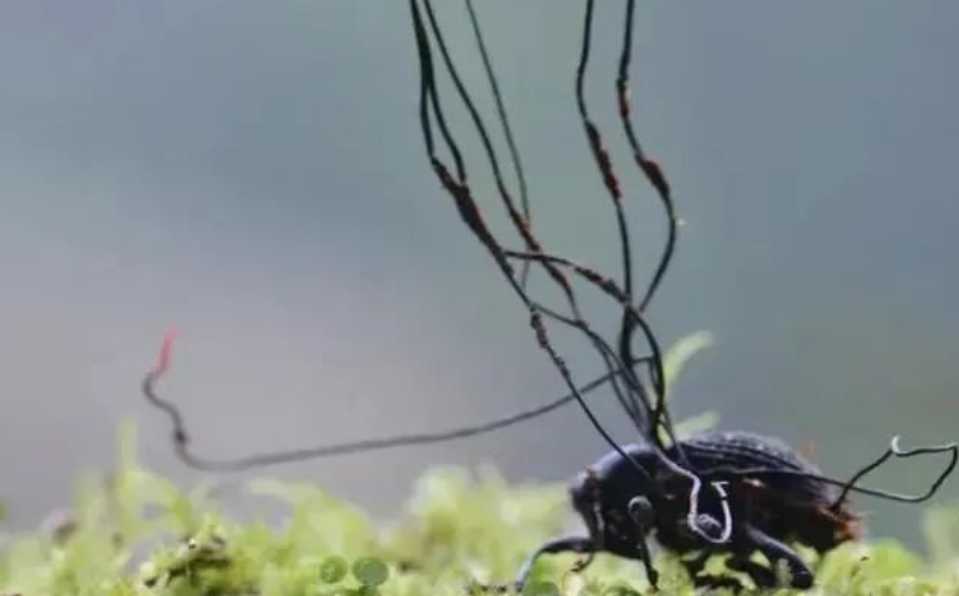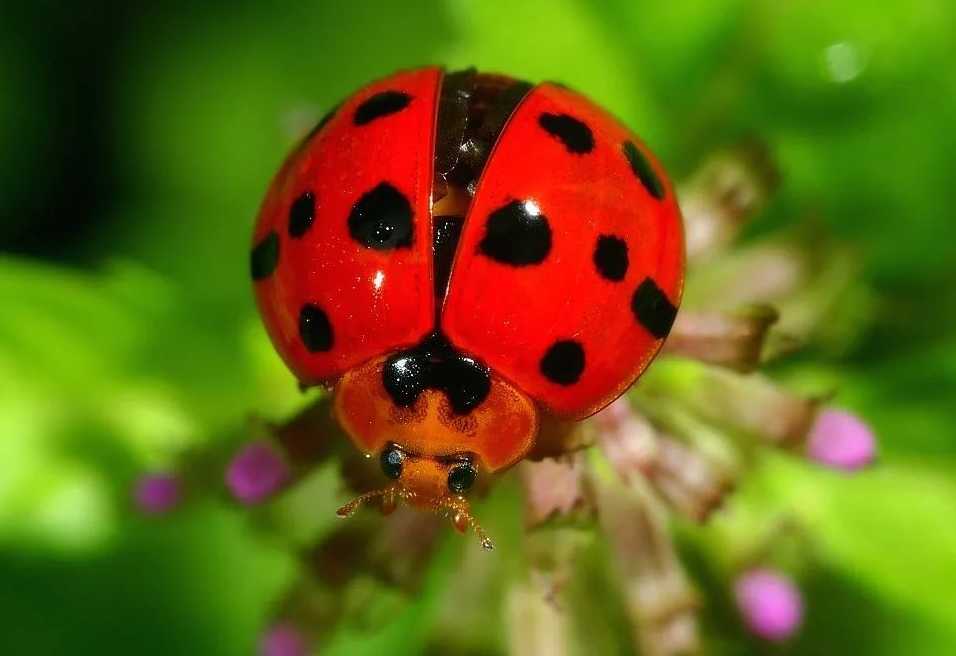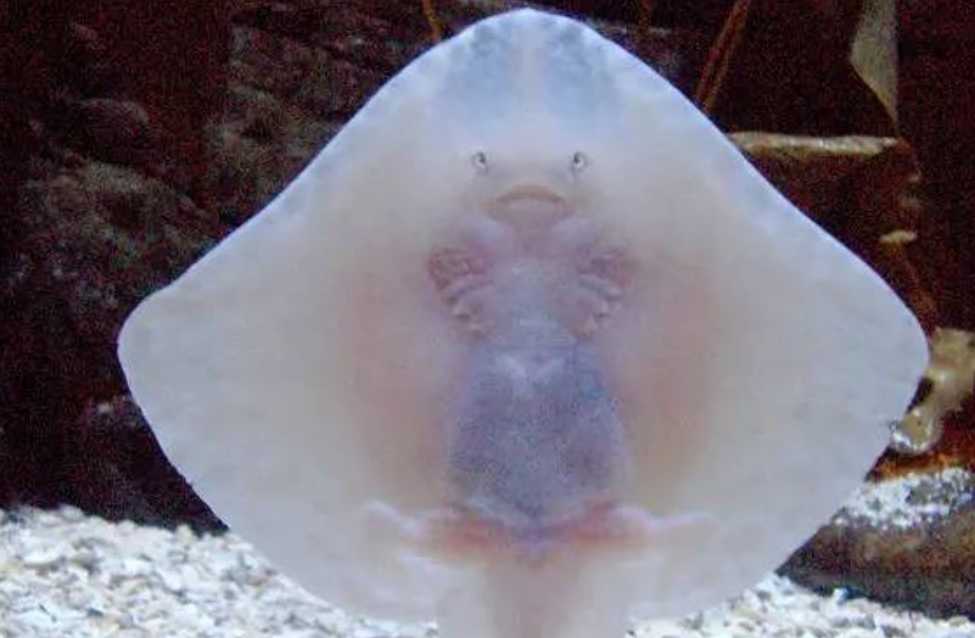- Spore attachment and invasion: The spores of the cordyceps fungus adhere to the beetle's body and germinate. The fungal filaments then penetrate the beetle's exoskeleton and enter its body.
- Taking control of the body: After entering the beetle's body, the fungus releases chemicals that interfere with the beetle's nervous system, causing behavioral changes. For example, the beetle may leave its usual habitat and look for a suitable place for the fungus to grow and reproduce.
- Fungal growth and consumption: The fungus grows inside the beetle's body, gradually consuming its internal organs and nutrients. As the fungus grows, it may cause the beetle's body to bloat or change in appearance.
- Sporulation and release: Eventually, the fungus matures and forms fruiting bodies on the beetle's body. These fruiting bodies release spores into the environment, which can then infect other beetles or insects, starting a new cycle of infection.
In the end, the beetle dies, and its body becomes a "spore - spreading machine" for the cordyceps fungus. This process is a fascinating yet eerie example of the relationship between parasites and their hosts in nature.
-------- END --------






